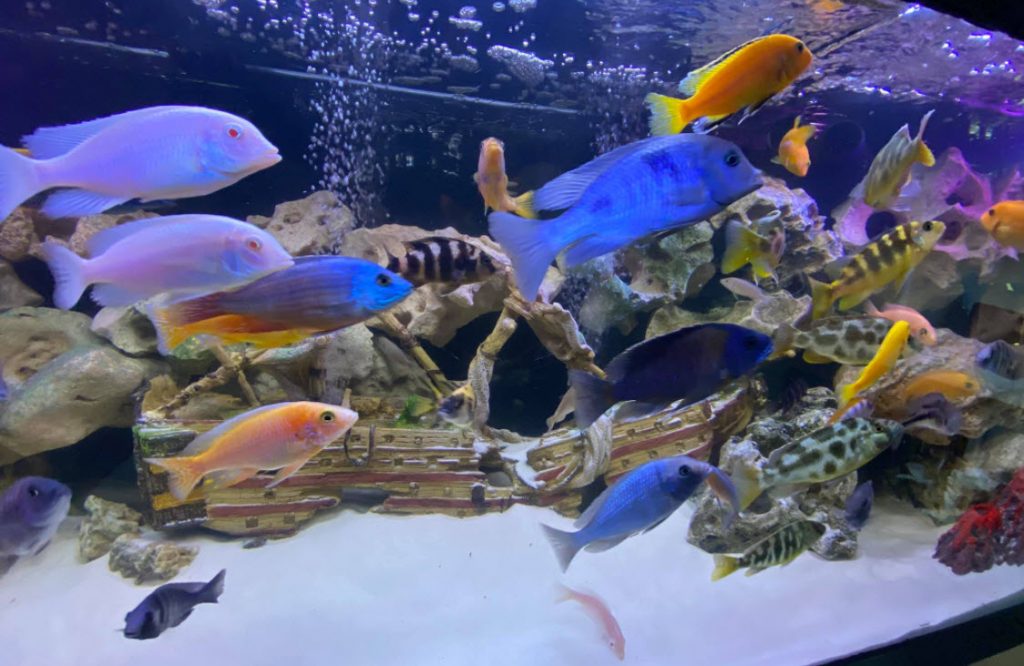
Like all the topics in this website we discuss water hardness in a series of discussions. The simplest explanation is first, followed by a more in depth discussion. Then there are links to very in depth discussions of both GH and KH hardness.
The Simple Explanation
There are two types of hardness use in the aquarium hobby. General hardness (GH) and carbonate hardness (KH). GH and KH most often move in lockstep but it is possible to have high GH and no KH and no GH and high KH.
GH (“general hardness”, or “total hardness”) is just the amount of calcium and magnesium in the water. This is the white crap that builds up at the waterline of aquariums. GH is unimportant for ALL adult fish and almost all eggs and fry.
KH (“carbonate hardness” or “alkalinity”) is the amount of “buffering”. Buffering in this case reflects the ability of the water to resist downward drops in pH. KH is unimportant for ALL fish, adult or fry in any aquarium with decent water changes.
It cannot be emphasized enough:
.
KH and GH are unimportant in aquariums!
.
Just keep the pH between 6.5 and 8.5 and the total dissolved solids above 50 (i.e. all water except distilled and RO) and all fish do fine. GH and pH only become important in breeding a few species of fish and for shrimp and snails. KH becomes important with intensive cycling of aquariums.
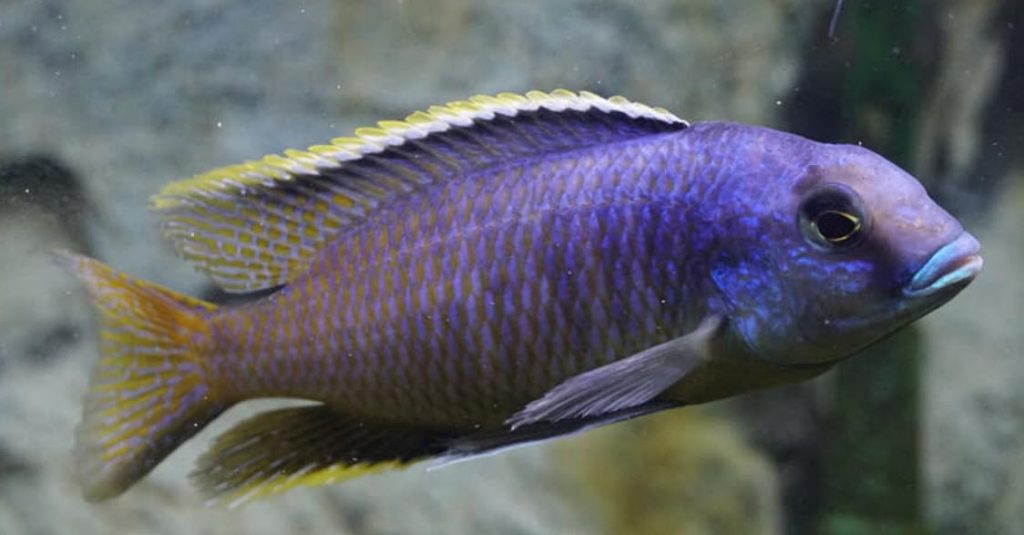
Hardness in More Depth
The terminology surrounding the two types of hardness is very confusing since different authors use different terms for each type of hardness. This terminology is best illustrated with a chart:
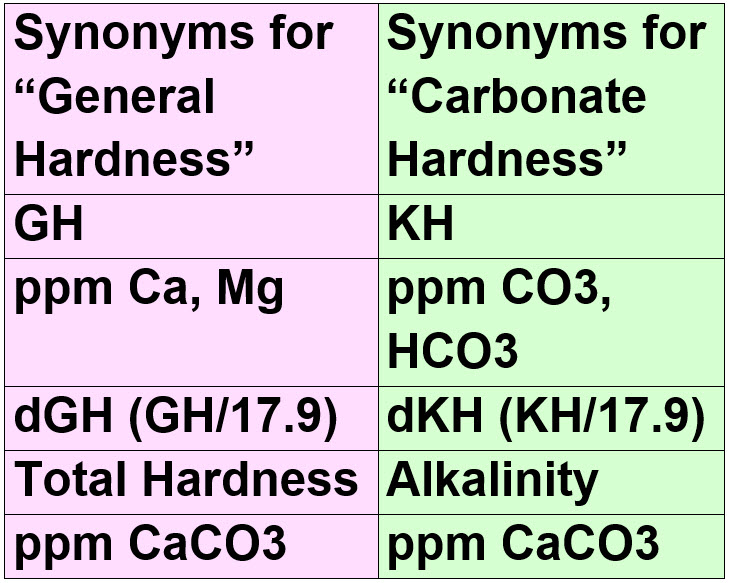
For our purposes we will simply use four terms for hardness: Carbonate Hardness or KH and General Hardness or GH. Note that the commonest terminology mistake is to be using KH and GH when one actually means to be using dKH and dGH.
The term use of the term “alkalinity” to describe carbonate hardness (KH) is the source of a lot of confusion. Alkalinity is the buffering capacity of a water body; a measure of the ability of the water body to neutralize acids and bases and thus maintain a fairly stable pH level. This buffering is generally provided by carbonates and bicarbonates.
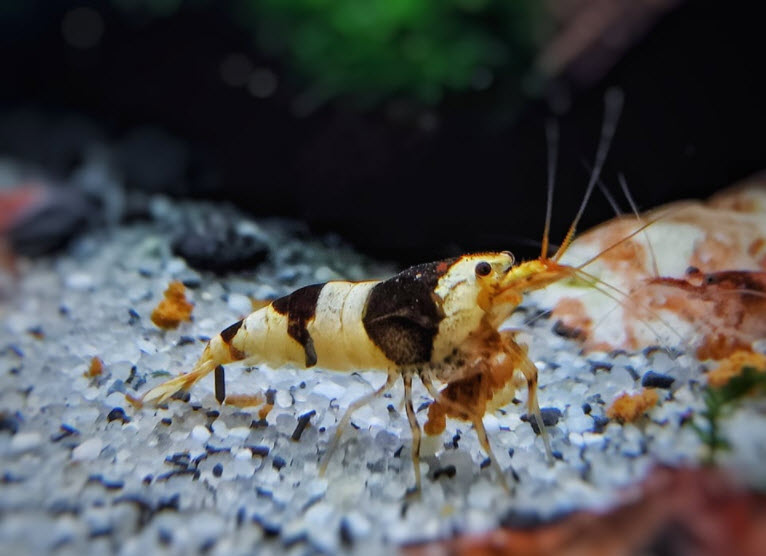
Carbonate hardness (KH) refers to the amount of the anions (negatively charged ions) carbonate and bicarbonate in the water. Bicarbonate and carbonate neutralize acids by producing carbon dioxide gas which gasses off from the aquarium. An aquarium with high KH will resist something called “old tank syndrome”, where the water in the aquarium becomes very acid.
Very acid water stops the “cycle” in the tank and is bad. When one is intensively cycling an aquarium with water on the soft side one needs to constantly add sodium bicarbonate to keep the KH up above 18 KH.
General Hardness (GH) refers to the amount of the cations (positively charge ions) calcium and magnesium in the water. Calcium and magnesium carbonate salts tend to be very insoluble in water and precipitate out readily, forming the white line at the waterline in older aquariums. Calcium and magnesium cannot be removed from an aquarium directly. But calcium and magnesium can be removed by pretreating the water with either reverse osmosis systems or water softening systems.
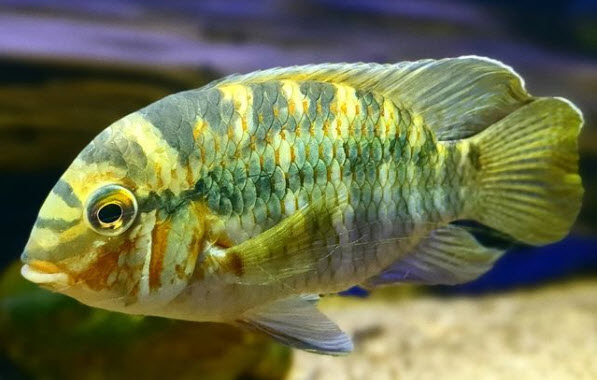
GH can be the same, higher or lower to the KH depending on the cations and anions in the sample. For example, a large amount of NaHCO3 (sodium bicarbonate or baking soda) would raise the KH and not affect the GH. A large amount of MgSO4 (magnesium sulfate or Epsom Salts) would raise the GH and not the KH.
If one overlays the maps of KH and GH in the tap waters in the USA they DO NOT correlate well. There are large areas with tap water which is high in KH (like 400) and low in GH (like 20). The range of GH is 10 to 250 while the KH is 0 to 400.
Much like pH, aquarium water hardness, both GH and KH, just is not very important. The published hardness ranges for the native waters of most aquarium fish are quite broad. And all fish can survive just fine well outside those ranges. Snails and shrimp require some GH.
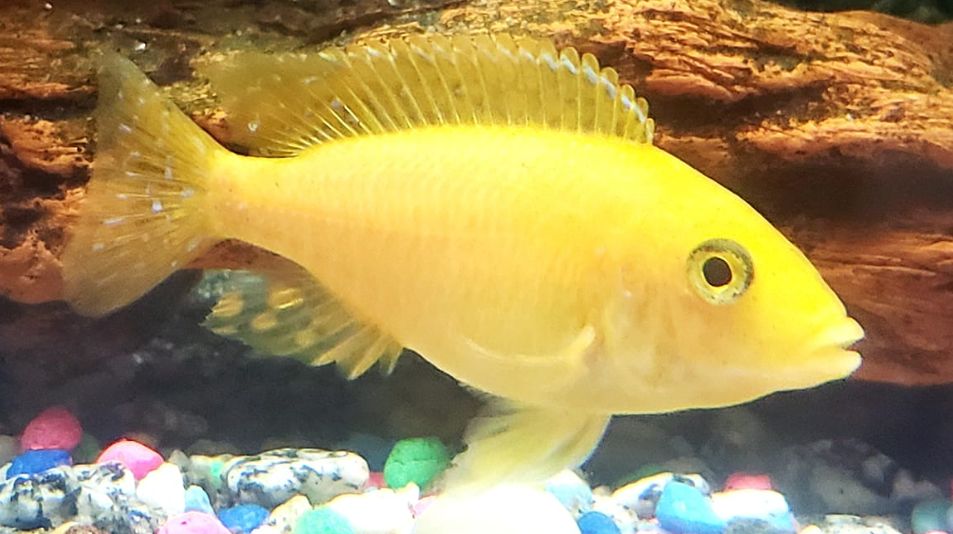
Backup Research
Because general hardness and carbonate hardness are not actually as closely related to each other as the non-chemist is prone to believe, these two topics are best discussed separately. There are some aquarium hobbyists who are interested in delving deep into the science and the calculations behind all aspects of the hobby. And some hobbyists like to see all the research as to why hardness is not very important in the aquarium. For those who are so inclined the following more in-depth articles are pertinent:
4.5.1. General Hardness
4.5.2. Carbonate Hardness
.
Return to Temperature, pH, KH and GH
.
Aquarium Science Website
The chapters shown below or on the right side in maroon lead to close to 400 articles on all aspects of keeping a freshwater aquarium. These articles have NO links to profit making sites and are thus unbiased in their recommendations, unlike all the for-profit sites you will find with Google. Bookmark and browse!
.

Dave says
In reply to Patrick ….. Highly unlikely to occur. Mr. Hau has tanks he hasn’t done anything save top off for ten years with no problems. BUT Mr. Hau tanks where he removes plants and fish on a regular basis and sells them. This ends up taking the place of water changes. Also Mr. Hau’s water is very soft to begin with.
Patrick says
Hi David, can you comment on the notion that water changes are necessary because if you only top off the tank, water hardness will build up to extremes that will kill your fish? Is this true?
Heather Jackson says
I’m sorry but I have to disagree. Over a year ago the city changed our already very hard water to extremely hard. Now when water first comes out the tap the pH max’s out on the API freshwater kit and then the next day the pH drops to 6.5. The first several times I did a water change without realizing this I had more than half of my fish going nuts as I was changing the water and the last time one of them died. Since I’ve added neutralizer to my water this has not happened once.
Father Fish says
Good to see you getting on board with the simple approach to fish keeping. Together we can save this hobby.
Paddy Eason says
Just about to set up a new 120L tropical freshwater tank. Diana Walstad and the articles here are my guiding lights! Low intervention and balance is the way. I’ve run a small tank this way (instinct, or laziness?) for years. All the fussing, fiddling and water changing is so silly, 😉
John McDonald says
Lots of great information. Ive been perusing your site the last two days. It has helped me to investigate further on many topics ie. Planted tanks with fish, PH, filters and their importance in not being overly cleaned. I do have to laugh when I see someone Post on Facebook fish group about a problem they have, and then read about a dozen different‘ solutions’ that many times are diametrically opposed to each other. I tend to be more impressed by science than “i heard that…”
Ps. Love your photos of Rainbow Fish. I have three turquoise that are beautiful, especially when spawning.